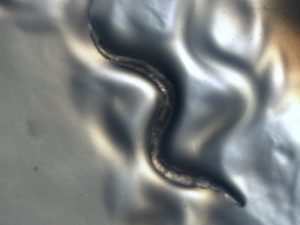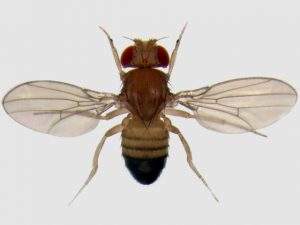Development of Caenorhabditis elegans and Drosophila melanogaster as Screening Tools in Understanding Disorders Related to Ageing
Researchers:
School of Biological Sciences, USM
Prof. Dr. Mohd Nazalan Mohd Najimudin (PI)
Dr. Mohd Ghows Mohd Azzam
RIKEN
Dr. Hiroyuki Osada
Dr. Nobumoto Watanabe
Dr. Todd Taylor
Summary:
As individual ages, the incidence of age-related disorders began to appear. Understanding the complex changes associated with ageing is necessary to develop pharmaceutical interventions to improve the quality of life of the elderly group. Among the conditions that affect the elderlies are neurodegenerative diseases such as Alzheimer’s and Parkinson’s. Numerous biomedical research crucial to address these problems are being performed hoping that they lead to novel therapeutics.
Various animal models are currently being used to understand the molecular basis of the progression of the diseases. Mouse is the most commonly used model as it is easy to generate a diverse range of strains that mimic the neurodegenerative disease-related pathologies. The other vertebrate model is zebrafish (Danio rerio), the adults of which are inexpensive to maintain, and has been used as a model system for many developmental biology studies. However, both mouse and zebrafish are still not suitable for an effective high throughput drug discovery screening process.
Recently scientists have developed much smaller models in the form of little worms known as Caenorhabditis elegans and the fruitfly Drosophila melanogaster (1,2). Worms and fruitflies that expressed the human proteins believed to be responsible for the disorders have successfully been generated and they were showed immobility as well as a short lifespan. It is believed that the insoluble protein aggregates connected to Alzheimer’s disease (AD) are responsible for these characteristics (3). Parkinson’s disease is considered a disorder due to an abnormal accumulation of alpha-synuclein protein in the brain (4).


The transparent roundworm, C. elegans (L) and fruitfly, D. melanogaster (R), which are used as models in aging research
Our group intend to exploit the distinctive characteristics of these special organisms as a means of screening for Malaysian natural products that can diminish these features. The genetics behind the longer lifespan has been consistent in D. melanogaster, C. elegans and mouse models. Now it is interesting to see how these studies can help improve the ageing problem we face in humans. While prolonging the life of human using genetics is still far away, the mechanism that we can uncover using these modal organisms could shed some light into the pathways that is required to slow down the process of ageing hence improving the quality of life at older age.
We will focus on two ageing related diseases which are Alzheimer’s and Parkinson. The aim is to develop a screening system which we could identify compounds that will have a positive effect on delaying or preventing the development of these neurological diseases. In the meantime, we are also looking at diseases related genes and their connection in the development of Alzheimer’s and Parkinson disease. Any component that can increase the lifespan and agility of the C. elegans and D. melanogaster individuals can potentially serve as leads for an in depth study on vertebrate models.
References:
- Calahorro, F and Ruiz-Rubio, M (2011). Caenorhabditis elegans as an experimental tool for the study of complex neurological diseases: Parkinson’s disease, Alzheimer’s disease and autism spectrum disorder. Invertebrate neuroscience, 11(2), 73-83.
- Cao, W, Song, HJ, Gangi, T, Kelkar, A, Antani, I, Garza, D and Konsolaki, M (2008). Identification of novel genes that modify phenotypes induced by Alzheimer’s β-amyloid overexpression in Drosophila. Genetics, 178(3), 1457-1471.
- Murphy, MP and LeVine III, H (2010). Alzheimer’s disease and the β-amyloid peptide. Journal of Alzheimer’s disease: JAD, 19(1), 311.
- Coppedè, F (2012). Genetics and epigenetics of Parkinson’s disease. The Scientific World Journal, 2012.
